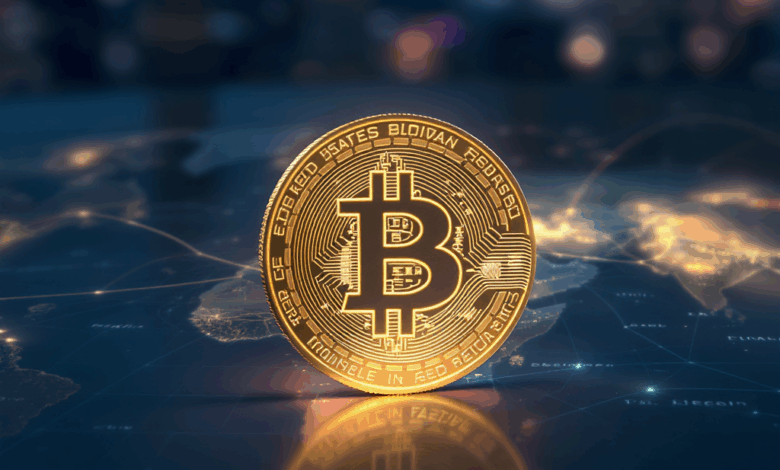When Geopolitics Meets Bitcoin – Can a Digital Currency Weather the Storms of Global Tension?

Have you ever wondered how a digital currency, invisible and decentralized, reacts when the world stage trembles with conflict and diplomacy? Just recently, I found myself tracking Bitcoin’s price—not out of mere curiosity, but because it felt like watching a barometer of global tension and hope all at once.
In May 2025, Bitcoin broke the $100,000 barrier, buoyed by optimism from a new U.S.-U.K. trade agreement. At first glance, it might seem odd that a trade deal between two nations could ripple into the cryptocurrency market so dramatically. Yet, the specifics—the U.S. maintaining a 10% tariff while the U.K. slashed theirs to 1.8%, coupled with expanded access for American goods—calmed uncertainties that had loomed large. Institutions responded, flooding Bitcoin ETFs with billions, as if signaling a newfound trust in this digital asset amid clearer economic pathways.
But then, the plot thickened. Just a month later, hopes for the “Genius Act,” a U.S. regulatory framework for digital assets, propelled Bitcoin to an all-time high of over $111,000. Regulatory clarity—often a double-edged sword for cryptocurrencies—here seemed to act as a catalyst rather than a constraint. It made me pause: Could the establishment’s embrace be the very thing that steadies Bitcoin’s notoriously volatile ship?
Yet, the story isn’t one of unbroken ascent. June also witnessed the eruption of the Israel-Hamas conflict, and Bitcoin’s price dipped by 4.5% within 24 hours. The decline was sharp, but notably moderate given the severity of the geopolitical upheaval. This resilience intrigued me. Unlike traditional assets that might plummet or soar wildly on such news, Bitcoin’s decentralized nature seemed to provide a unique buffer.
What strikes me here is Bitcoin’s dual identity—as both a risk asset sensitive to geopolitical tremors and a potential safe haven when traditional markets waver. It’s as if Bitcoin is simultaneously a ship tossed by waves and a lighthouse guiding investors through storms.
But what does this mean for those of us watching, invested, or simply curious? Should we see Bitcoin as a reliable hedge in uncertain times, or as a volatile gamble that mirrors global instability?
I find myself pondering these questions, recognizing that the answers are not yet clear-cut. Perhaps Bitcoin’s evolving dance with geopolitics is less about finding stability and more about reflecting the complex, often contradictory nature of our interconnected world.
Does this make you wonder how your own investments or beliefs might shift as digital currencies continue to entwine with global events? Could Bitcoin’s journey be a mirror for the uncertainties we all face?
In the end, maybe what’s most compelling isn’t the price itself, but the story it tells about trust, uncertainty, and adaptation in a rapidly changing world. And perhaps this story, like the tides, is just beginning to unfold.
When Global Tensions Whisper to Bitcoin’s Price — What’s Really Going On?
I keep circling back to a moment in early May 2025. Bitcoin had just soared past that psychological $100,000 barrier, and the headlines were ablaze with excitement over a new U.S.-U.K. trade agreement. But it wasn’t just the numbers that grabbed me—it was the subtle interplay between geopolitical shifts and this digital asset that usually feels detached from the traditional world. How could a trade deal, essentially a diplomatic handshake, ripple so strongly into Bitcoin’s valuation?
What struck me was the nature of this agreement: the U.S. holding firm on a 10% tariff, while the U.K. made a notable concession, dropping tariffs to just 1.8%. More than that, the deal expanded market access for American goods. This delicate balance seemed to soothe investor anxieties, nudging institutions to pour billions into Bitcoin ETFs. Suddenly, Bitcoin wasn’t just a speculative play; it was becoming a barometer of global economic confidence.
Then came June, and with it, the much-anticipated “Genius Act”—a proposed U.S. regulatory framework for digital assets. Conventional wisdom often paints regulation as the kryptonite to crypto’s free spirit. Yet here, it appeared as a stabilizing force. Bitcoin’s climb to a record $111,816 seemed to echo investor relief that clarity might finally reign. It made me wonder: could formal rules actually coax institutional players deeper into the crypto space, lending it a legitimacy it sorely needed?
But of course, the story isn’t so linear. Just days after this high, geopolitical upheaval struck with the Israel-Hamas conflict. Bitcoin’s price took a 4.5% dip within 24 hours—not insignificant, but surprisingly moderate given the gravity of the situation. It felt like Bitcoin was absorbing shocks differently than traditional markets, its decentralized architecture offering a kind of resilience. Yet, this duality—being both sensitive to global tremors and able to bounce back—raises complex questions about Bitcoin’s true character.
Is it a risk asset, vulnerable to the same fears and uncertainties as stocks and commodities? Or is it morphing into a digital safe haven, a refuge when conventional systems waver? Perhaps it embodies both, reflecting the contradictions of our interconnected world.
This dual identity has practical implications. For investors and professionals navigating volatile markets, understanding Bitcoin’s nuanced response to geopolitical events is crucial. It’s not enough to treat it as a simple hedge or speculative instrument. Instead, one must appreciate how trade policies, regulatory developments, and conflicts can interplay to create a dynamic pricing environment.
Recent research and market analyses underscore this complexity. Institutional inflows surge around regulatory clarity and trade optimism, while geopolitical crises trigger swift, though often short-lived, price corrections. The “Genius Act” and the U.S.-U.K. trade deal aren’t isolated events—they symbolize a shifting landscape where digital assets are increasingly entwined with traditional economic and political frameworks.
For those of us watching or invested in Bitcoin, this means staying attuned not only to blockchain innovations but also to the ebb and flow of global affairs. Diversification and risk management become more than buzzwords—they’re essential strategies to navigate these intertwined currents.
But here’s the lingering thought: as Bitcoin’s journey continues to reflect and react to geopolitical events, might it also be shaping new narratives about trust, sovereignty, and value in the 21st century? Could the way Bitcoin weathers these storms offer a mirror to how we, as societies, adapt to uncertainty and change?
I find myself circling back to these questions often, realizing that the story is far from over. Perhaps, rather than seeking firm answers, we’re invited to join an unfolding conversation—one that challenges us to rethink what value means in a world where borders blur and digital meets geopolitical.
So, what do you think? As Bitcoin dances on the world stage, mirroring conflicts and accords, how might this influence your view of money, security, and the future? Could this be the beginning of a new chapter where digital currencies serve as both indicators and agents of global change?
The tides are shifting, and Bitcoin’s price is just one wave telling the tale. What comes next might depend as much on our collective imagination as on market forces.

Reflecting on Bitcoin’s recent journey through the turbulent waters of geopolitics, it becomes clear that this digital currency is more than just a financial instrument—it’s a living narrative of our times. The interplay between diplomatic shifts like the U.S.-U.K. trade agreement, regulatory milestones such as the “Genius Act,” and sudden conflicts exemplifies how Bitcoin simultaneously embodies fragility and resilience. This dual character challenges us to rethink traditional categories of risk and safety, suggesting that Bitcoin’s price movements may be less about isolated market forces and more about the complex tapestry of global trust and uncertainty.
For those of us navigating this evolving landscape, the value gained lies not only in understanding Bitcoin’s price trends but in appreciating how digital assets mirror broader societal dynamics. Recognizing this can deepen our strategic approach—encouraging us to watch beyond charts and headlines, to the underlying currents shaping global finance and politics.
So, what can we do now? Staying informed about geopolitical developments and regulatory changes is essential, but equally important is cultivating flexibility in our investment mindset. Embracing diversification, engaging with ongoing discourse about digital economies, and reflecting on how these shifts resonate with our personal values and risk tolerance can empower us to respond thoughtfully rather than react impulsively.
Looking ahead, Bitcoin’s role may continue to oscillate between volatility and refuge, reflecting the unpredictability of international relations and technological progress. As digital currencies weave deeper into the fabric of global affairs, they may not only respond to change but also influence how trust and sovereignty are negotiated in the 21st century.
Perhaps the most compelling takeaway is an invitation—to see Bitcoin not just as a market asset but as a storyteller of our interconnected world. What narratives will emerge as we collectively navigate this unfolding chapter? How might your own perspective on value and security evolve in response? These questions remind us that in the midst of flux, there is opportunity for growth and new understanding. If this reflection resonated with you, consider exploring these themes further and watching closely as this fascinating story continues to unfold.





